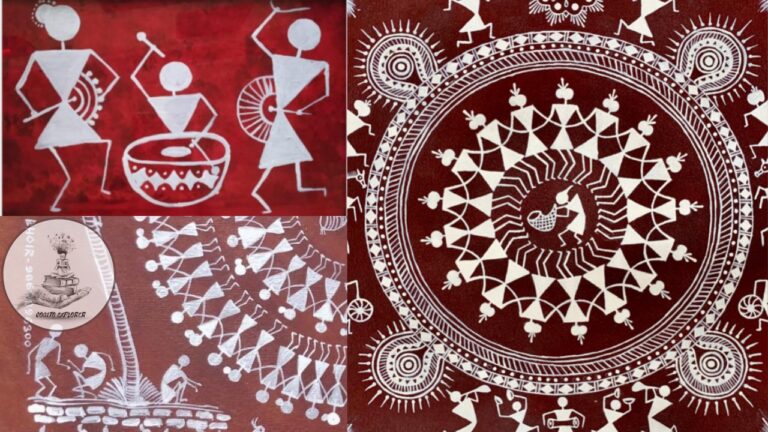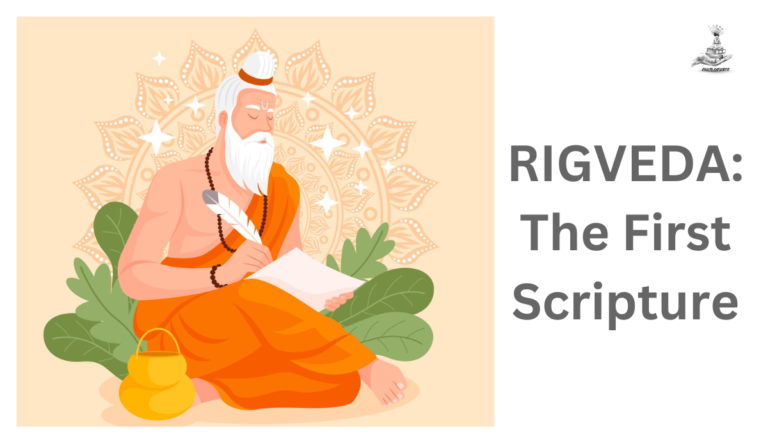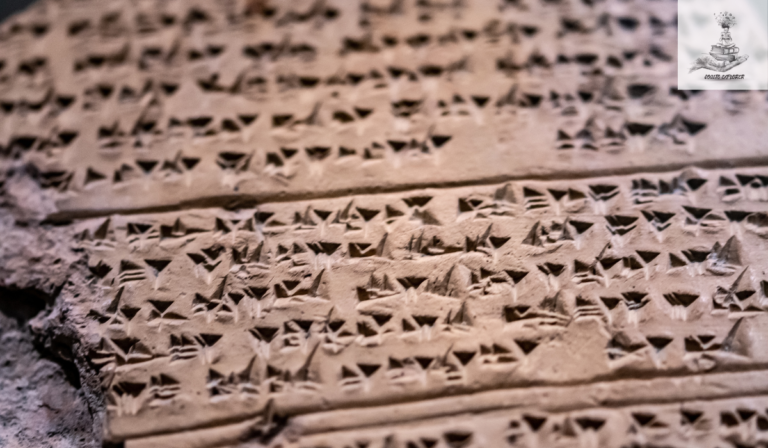The Vedas: The Genesis of Indian Thought
In our previous article on The progression of Language and Literature, we had an in-depth discussion about the origin and evolution of language and how writing systems have evolved throughout human history. Today we will discuss the literature from the Indian perspective. It is said that ancient Indian literature is the ocean of wisdom, this article will act as a navigating force for people willing to sail this ocean.
Our focus will be on the Shruti (The Vedas). A question often occurs, what are the Vedas? Simply put The Vedas are not just a piece of literature but a discipline as a whole. To understand them mere knowledge of the Language (Sanskrit) is not enough, one should have a profound understanding of all the disciplines (known as Vedangas) structured to realize the meaning of the Vedas.
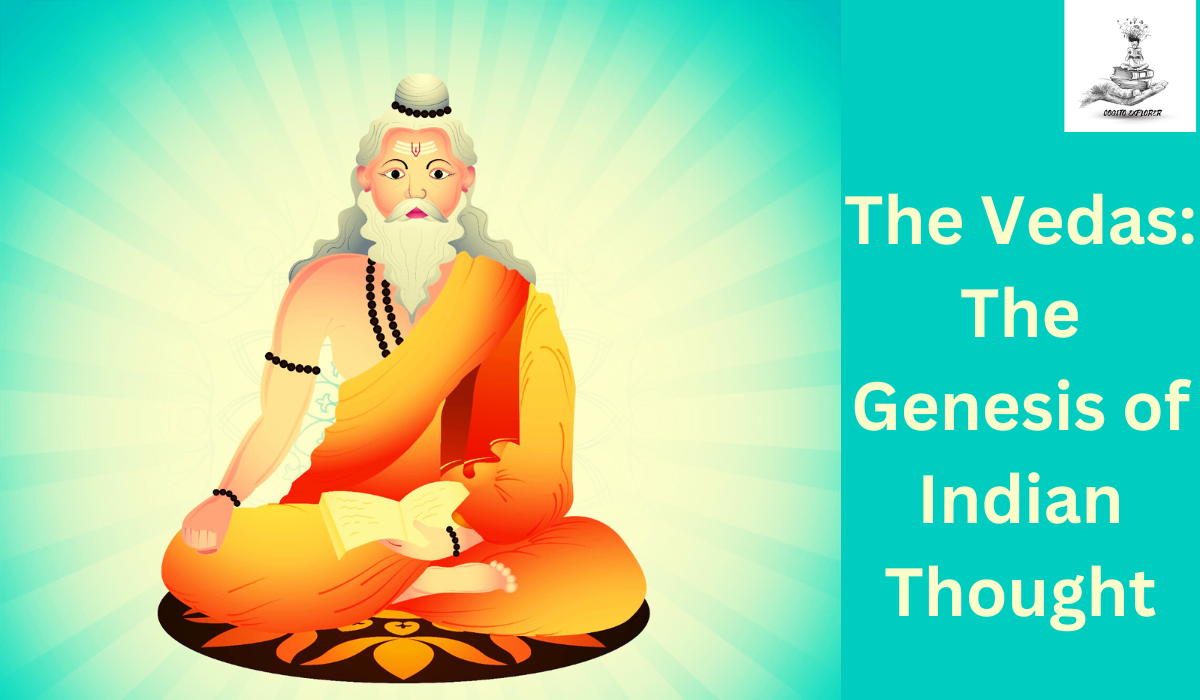
Vedanga: Discipline for the Study of The Vedas
The Vedangas are a group of auxiliary limbs of the Vedas that were developed to support the understanding, interpretation, and proper application of Vedic texts. These disciplines are considered essential for the correct understanding and performance of Vedic rituals and practices. They act as a medium to understand the actual meaning of the Vedas. There are traditionally six Vedangas:
Shiksha (Phonetics):
Shiksha deals with the phonetic aspects of the Vedas, including letters, pronunciation, accent, stress, melody, and meter. It provides rules for correct pronunciation and chanting (euphonic combination of words) of Vedic mantras (recitation). For instance, it guides the correct enunciation (utterance) of each syllable and the proper use of accents. Deviations from these rules could lead to changes in meaning or ritual efficacy.
Chandas (Prosody):
Chandas focuses on the poetic meters used in the composition of Vedic texts. A poetic meter is a structured form of rhythm used in poetry. It involves the arrangement of stressed and unstressed syllables in a line of verse, creating a pattern that contributes to the overall sound and musicality of the poem. In Vedas, it deals with the patterns of syllable lengths and accents in Vedic verses. An example of the poetic meter used in the Vedas is the Gayatri meter (used in many hymns). The Gayatri mantra is a well-known Vedic chant that follows this specific meter.
Vyakarana (Grammar):
Vyakarana is the study of grammar and linguistic analysis. It helps in understanding the grammatical structure of the Vedic texts, ensuring accurate interpretation and proper usage. Panini’s Ashtadhyayi is a classical Sanskrit grammar text that addresses the grammatical intricacies of Vedic and classical Sanskrit.
Kalpa (Rituals):
Kalpa focuses on the rituals and ceremonies described in the Vedas. It provides guidelines for the proper conduct of various Vedic rituals, including domestic ceremonies and public sacrifices. The Shrauta Sutras are texts that fall under Kalpa and provide detailed instructions for the performance of Vedic rituals, such as fire sacrifices (yajnas).
Nirukta (Etymology):
Nirukta deals with the interpretation of difficult and archaic words used in the Vedas. It provides explanations for the meanings of Vedic words and their linguistic roots. For instance, Yaska’s Nirukta provides etymological explanations for Vedic words, helping to understand their roots and semantic nuances.
Jyotisha (Astronomy/Astrology):
Jyotisha deals with astronomy and astrology. It includes the study of celestial bodies, timekeeping, and the calculation of auspicious moments for rituals based on celestial movements. The Vedic calendar, known as the Panchanga, is an example. It is based on the positions of the sun, moon, and other celestial bodies and is used to determine auspicious timings for various activities, including rituals.
These Vedangas collectively form a system that supports the accurate and meaningful study, recitation, and application of the Vedas. Each Vedanga plays a specific role in ensuring the proper transmission and understanding of Vedic knowledge. They are integral to the traditional Vedic education system and are often studied alongside the Vedas by those interested in mastering the Vedic scriptures.
Now let’s delve into the linguistic (spiritual) journey of ancient India from the very beginning.
The Vedas: The Genesis of Indian Thought
The Vedas are a collection of ancient religious texts that form the foundation of Sanatan Dharma. There are four Vedas: Rigveda, Samaveda, Yajurveda, and Atharvaveda. A detailed discussion on the contents, teaching, and underlying philosophy of each Veda will be done soon. Today we will analyze the general structure of the Vedas.
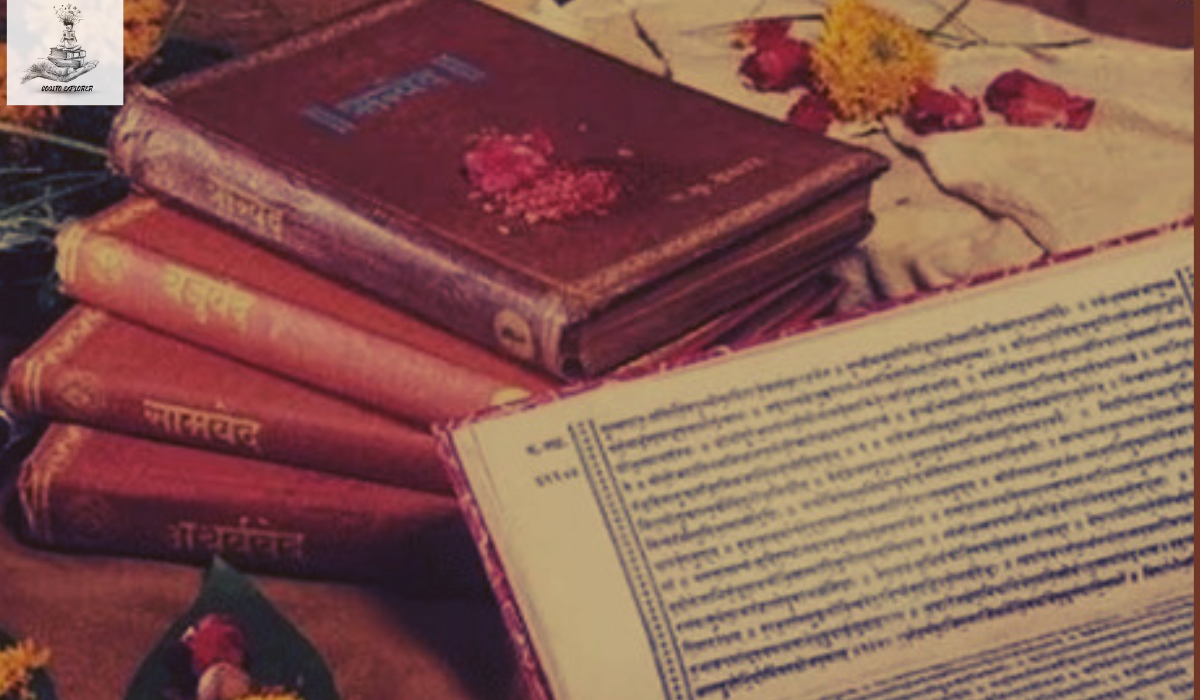
Each Veda consists of four parts: Samhitas, Brahmanas, Aranyakas, and Upanishads.
- Samhitas (Hymns): Each Veda consists of a Samhita, which is a collection of hymns or verses addressed to various deities and natural forces. The Samhitas are the oldest parts of the Vedas and form the core of the texts.
- Brahmanas (Prose Rituals): The Brahmanas are prose texts that provide explanations and instructions for the rituals and ceremonies mentioned in the Samhitas. They include details on the symbolism of the rituals and the correct procedures for their performance.
- Aranyakas (Forest Texts): Aranyakas are texts associated with contemplative and meditative practices. They were intended for hermits living in seclusion in the forests and provide a bridge between the ritualistic Brahmanas (Gyan Maarg) and the philosophical Upanishads (Karma Maarg).
- Upanishads (Philosophical Texts): The Upanishads are considered the culmination of Vedic thought. They explore the nature of reality, the self (Atman), and the ultimate reality (Brahman). The Upanishads are critical to the development of Hindu philosophy and are sometimes referred to as Vedanta (the end of the Vedas).
Influences on Indian Culture, Literature, and Philosophy:
Cultural Practices and Rituals:
The Vedas are considered a source of cultural identity for Hindus. They provide the foundational principles for religious rituals, ceremonies, and sacrificial practices. Rituals, ceremonies, and festivals often involve recitations from the Vedas. The knowledge contained in the Vedas still guides the religious and cultural life of Indian society and provides a sense of continuity and connection to ancient cultural and spiritual traditions.
Social Structure and Dharma:
The Vedas have had a profound impact on the social structure of India. The concept of Dharma (righteous duty) is derived from Vedic teachings. The Vedas delineate the roles and responsibilities of individuals based on their varna (social class) which will be discussed separately.
Philosophical Foundations:
The Upanishads, as part of the Vedas, laid the groundwork for various philosophical schools in India as discussed in The Philosophical Epochs. The Vedanta philosophy, in particular, explores the nature of reality and the relationship between the individual soul and the cosmic soul.
Language and Literature:
The Vedas played a crucial role in the development and preservation of the Sanskrit language. Sanskrit (the language of the Vedas) became the vehicle for a vast body of classical literature, scientific treatises, and philosophical texts. The epics of ancient India, such as the Mahabharata and the Ramayana, draw inspiration from Vedic themes and stories. Many characters and events in these epics are connected to Vedic traditions and beliefs. The study of Sanskrit (often initiated with the Vedas) remains an important academic pursuit for scholars for research and interpretation of Vedic texts.
Astronomy and Mathematics:
The Vedas contain references to astronomy, including the positions of celestial bodies and the concept of time. Ancient Indian mathematicians also drew inspiration from Vedic numerical concepts.
Traditional Education System:
The study of the Vedas was a central component of the traditional Gurukula system of education in ancient India where students would learn the Vedas under the guidance of a guru. The Gurukul system served as a unique and influential educational model in ancient India, emphasizing personalized learning, moral values, and a close teacher-student relationship.
Conclusion:
The Vedas stand as the foundational scriptures of Hinduism. Composed over a vast span of time they have shaped the spiritual, cultural, and philosophical landscape of India. They have influenced social structures, cultural practices, and the very fabric of daily life. The philosophical insights embedded in the Upanishads, have sparked diverse schools of thought, shaping the evolution of Hindu philosophy. Concepts such as Dharma, Karma, and Moksha find their roots in Vedic teachings, guiding ethical and spiritual principles. In contemporary times, the Vedas continue to be a source of spiritual guidance and cultural identity. They are not mere relics of the past but are living traditions that continue to inspire and guide millions on their spiritual journeys. The Vedas have garnered interest beyond India, attracting scholars, philosophers, and spiritual seekers from around the world. The global interest in Vedic philosophy reflects the enduring relevance of these ancient texts.



